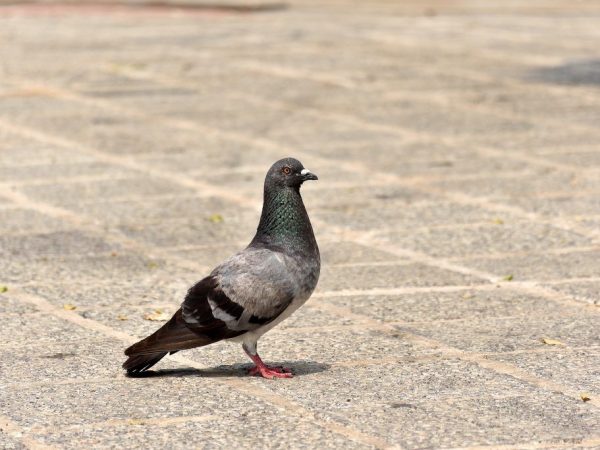Why do all pigeons nod their heads when walking
Few people know why pigeons nod their heads when walking. There are a lot of oddities and uniqueness in our life, which are rather difficult to explain. For example, not all the characteristics of animals can be understood. And one of the still unexplained - why doves nod their heads when walking.

Why do pigeons nod their heads when walking
History of appearance
In nature, pigeons settle in the mountains, on the seashore and rivers, but they also adapt well to life in our cities, since the houses and their structure, especially the "pockets" above the roofs, are very similar to their usual living conditions. They live for a relatively short time - 3-6 years.
They say that once a specimen was found that lived for more than 40 years. The species is characterized by speed and intelligence. Such individuals can reach speeds of up to 190 km / h, although it is difficult to do this in the city, because everywhere there are wires and tall buildings.
Possible reasons for this "oddity"
The pigeon has lived for several centuries on our land and not all the features of this species are clear to us. One of them - why do pigeons nod their heads with a characteristic movement. Probably, any person very often drew attention to the fact that when birds move, they begin to move their heads especially quickly.
In fact, there are several interpretations of this habit. They are mostly based on human observation and scientific assumptions. While not all of these theories are true, there are a few that are worthwhile. The main thing is to remember that a pigeon moves its head only when it walks. When a pigeon stands still, he does not move it, and there are explanations for this.
The first theory
One of the first explanations is very musical. They say that pigeons have a very delicate musical sense, which is why when they walk, they feel the rhythm of their steps and nod unintentionally to the beat.
It is believed that if you turn on music to a bird, you can notice an unusual reaction of the pigeon: it begins to look for the source of the noise and sometimes shake its head back and forth. Also, the winged ones begin to move very actively and walk from side to side.
Opinions are divided on this score.
- Some believe that the pigeon simply begins to worry and worry, so it behaves this way.
- Others are sure that the dove begins to dance to the music.
What other explanations are there
The second explanation is based on the fact that the pigeon nods when walking precisely because of the structure of its body. It is an established fact that these birds walk on two legs. If a person uses his hands for balance, swinging them from side to side, then the kochuga shakes his head back and forth for the same purpose. For example, eagles nod their heads for balance, but this is not so striking, because they move very imposingly, calmly and evenly.
This theory also has its drawbacks. For example, when the birdie is standing, it perfectly keeps its balance, the pigeon's legs are relatively strong, and the spread fingers with nails perfectly support the bird.
Anatomy is to blame
The third interpretation is tied to the anatomy of pigeons.Moreover, experts are sure that this particular theory is the reason for such a "strange" behavior of the birds. Due to the fact that the pigeon's eye is built in such a way that when walking it simply cannot move from side to side, the winged individual moves its entire head in order to be able to see the whole picture of the world. To understand where danger might lie, the bird needs to move its head.
An experiment was conducted with birds. For example, a pigeon was placed on a jogging track, where it was taught to walk. As it turned out, this anomaly has two sides.
- First side: the pigeon takes one step and nods its head to inspect the entire territory.
- The second side: when the speed of the treadmill and the pigeon become the same, the bird absolutely stops nodding, since the speed does not lag behind the general picture.
It is this version that is recognized most of all, since it is confirmed by a scientific experiment.
Maybe the nod is flirting?
This concept is related to bird breeding. They say that they constantly nod to attract the attention of females or males, in order to always be sure that they will not be alone at the right time. Very often birds are compared to artists who shake their heads during their performances in order to show their individuality. Of course, this reasoning is more based on public opinion and lacks scientific reasoning.
Today there are about 100 varieties of pigeons and they all move their heads back and forth when walking. However, with such a variety, the question of the reasons for head nodding by individuals remains open.


